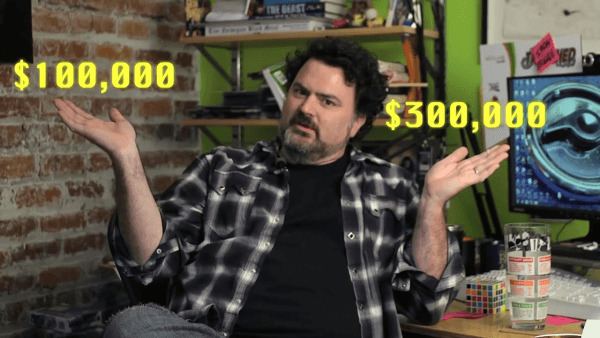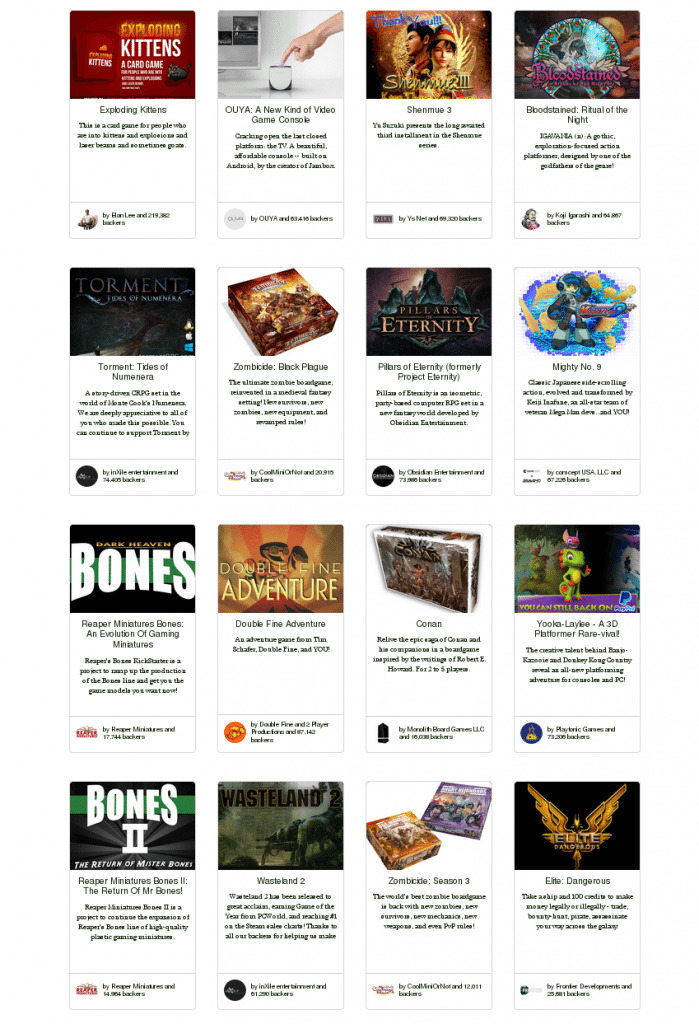How Double Fine Changed Game Development And Kickstarter Forever
Today, Double Fine released to the public the last episode of its aptly named Double Fine Adventure documentary series. This ends a run that was something akin to a TV soap that spanned 20 episodes and three years (Episode went up August 2012). It also closes a chapter of the game studio's history, a single chapter but one whose effects have rippled throughout the gaming industry and the crowdfunding scene. And whether or not you actually liked their Broken Age game, there is no denying it: Double Fine made, and changed, history. For better or for worse.
The History
It started all innocently enough. Double Fine put out a Kickstarter pitch to not only create but also document the creation of an adventure game, a genre long thought to be dead in a world of fast-paced action games on consoles. The goal was humble and the budget even more so. $400,000. That was all they asked. In retrospect, that is absolutely bonkers. But they made it. And they made it in spades, $3.3 million in all. Back in 2012, that was an achievement of galactic proportions. They were more than double fine. They were epic fine.
Double Fine is no strange to the game development. It could be considered even to be one of the veterans, with its roots going back to LucasArts, former bastion of the adventure game genre. Over the years, however, the studio has had a few close calls, alternating between stellar success and near fatal flops. They managed to float with their heads above the water. Barely. Circumstances would dictate that they remain an indie studio despite the wolves at the door. Kickstarter gave them a new option. Go direct to the gamers, throw out the middle man (publishers). The idea resonated well enough that gamers, especially those with fond memories of adventure games, flocked in droves, putting money where their mouths are.

For a time, everything looks fine and dandy, but this wouldn't be an interesting retrospective if it ended there.
The Drama
Game development is no walk in the park. Any developer who tells you otherwise has probably had too much coffee or too little. Crunch is an affliction that affects giant studios, two-man (or woman) teams, and mid-size developers like Double Fine. And drama, no one can escape the drama. Especially when development is done somewhat in the open like how Double Fine planned the course for what was still called "Double Fine Adventure" back then. At first it seemed that everything was going fine, though not doubly. Sure there were some set backs, some delays. But, for a time, Double Fine Adventure seemed unstoppable.
And then the proverbial excrement hit the proverbial fan.
In early 2014, Double Fine dropped the bombshell. It was splitting up the game into two Acts, with the first one going out before the second. Another common game development ailment reared its ugly head: scope creep. The game that lead designer and CEO Tim Schafer envisioned was much grander than the mere $400,000 could probably fund. Even more shocking, however, was that they had almost all but run out of the $3.3 million they raised. All of this happening two years after the "estimated delivery" on Kickstarter (October 2012).
Needless to say, even fans and believers were beyond exasperated. Mud has been thrown from every direction. It painted a picture of the company as an overambitious, poorly managed game studio. That said, things are not always as bad as how media usually portrays them. Double Fine enjoyed just as much support even defense from backers who have been more privy to the conditions behind the doors, offering more understanding and patience than those outside could comprehend. Still, it was a fine mess.
The Game
After all that has been said and done, Act 2 of Broken Age finally shipped last April, finally completing two halves that should have been one. While Double Fine would pretty much prefer gamers to look at the game as a unified whole, and even encouraged replaying it from the beginning instead of staring half way through, there's no denying the fact that the two parts were made at very different times, with very different mindsets. And that is felt in the game itself.
Act 1 was generally panned as something "too easy". The puzzle didn't alway make sense or connect. The visuals, though a work of art, was at times described to be like from a child's book, which may or may not have been intentional. The second act fared better, though at times seemed to go to the other extreme, with indecipherable puzzles and almost unnecessary exposition.

Overall, the game was generally positively reviewed and received high marks, with a few glaring exceptions. At least for now, it seemed that Double Fine accomplished what it set out to do, to create an adventure game. Fortunately, that's not the only thing it succeeded at.
The Legacy
Double Fine did put out an adventure game. Whether or not that game matched expectations and dreams is an exercise left for gamers and critics. Looking back at three years of adventure, however, it seems that, at least for the gaming industry at large, the game is almost just the icing on top. Double Fine's legacy will, at least for the foreseeable feature, be about how it paved the way for other game developers to find their dreams on Kickstarter.
Double Fine accomplished what was previously thought impossible: funding a game through crowdfunding. It proved that, if an idea resonated hard enough, people, and their money, will come. Nostalgia was also proven to be a very potent factor, one that would, again and again, be used to great effect. Just take a look at the most funded games on Kickstarter as evidence.
• inXile, which harkens from the Interplay/Black Isle days, had two very successful Kickstarters: Wasteland 2 ($2.9 million, delivered) and Torment: Tides of Numenera ($4.1, in production).
• Obsidian Entertainment, also from Interplay/Black Isle, raised $4.0 million for Pillars of Eternity, which already rolled out to backers and new buyers
• Keiji Inafune, Mega Man creator, got Mighty No. 9 funded to the tune of $3.8 million
• Koji Igarashi, the brains behind the Castlevania series, received $5.5 million for his Bloodstained game
• And of course the latest record breaker, Shenmue 3 raised $6.3 million to make a long-awaited sequel come to life
All of these are long-time game development veterans, not relatively unknown indies that still have to prove their worth. They not only bring experience but also old, as well as new, dreams.

But it isn't just Kickstarter that Double Fine changed. It had a more subtle effect on how game developers communicate with their fans and potential buyers. Double Fine was one of the few, if not the first, to offer an insider look in the developer process, promising regular updates about the state of the game. Other game developers on Kickstarter would follow suit but in different ways. Unlike Double Fine, some would make the updates available to the public, but also less detailed or expository. Others promised a documentary only at the end of the development process, while still delivering timely updates via Kickstarter.
This new culture of openness would bleed in to the gaming industry as a whole. Dev Diaries on YouTube are becoming more common, with developers and studios sharing their joys, and sometimes even their pains, with gamers. Of course it isn't totally open, but it does give gamers something tangible to hold on to, something to hope for. It also helped widen the public's understanding of the development process, previously considered an arcane art completely behind closed doors. Game development processes might have not changed completely, but their communication definitely has.
Wrap-up
Broken Age might not be Double Fine's best game, but it will be one of if not the most notable. Ironically perhaps not for the game itself. For all its shortcomings that have been perhaps magnified by its openness, Double Fine should, at the very least, be thanked for having blazed a trail that other game developers, especially veterans, would later on follow. They should, perhaps, be thanked for making games like Wasteland 2 and Shenmue 3 even possible. And finally, they could be credited by making openness cool again, something previously unheard of, even unthinkable, in a secretive gaming industry.
Maybe in a few years we'll all forget this Double Fine legacy. Maybe in a few years, we might even forget about Double Fine itself. But for now, we can cherish and relish what it started and let a hundred more games flourish.
You can now watch the entire 30 episodes of the Double Fine Adventure series on YouTube, so get that popcorn ready.
